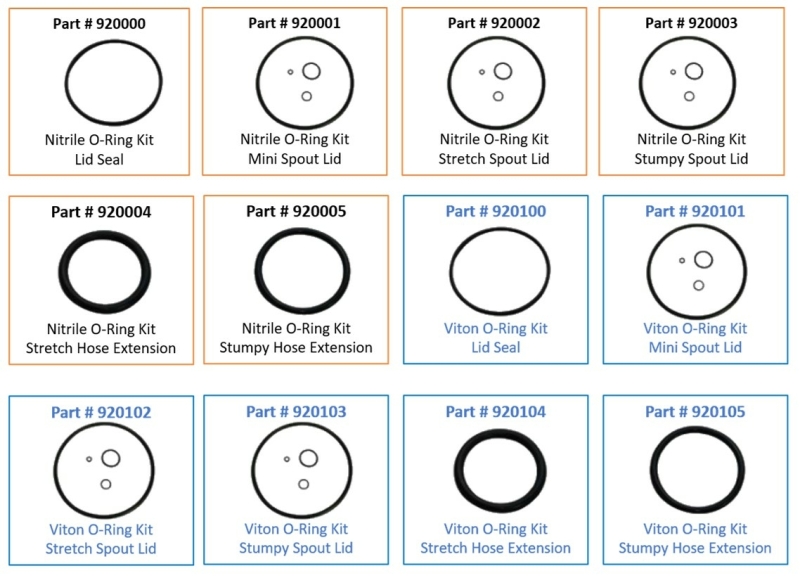What Are Fluoroelastomer O-rings? | Lubripedia
A fluoroelastomer O-ring, also called an FKM O-ring, is a sealing ring made from a fluorinated synthetic rubber. These O-rings are prized for their exceptional resistance to chemicals, oils, fuels, and high temperatures, making them suitable for demanding industrial environments.
What Makes Fluoroelastomer Special?
Fluoroelastomers are polymers composed of fluorine, carbon, and sometimes hydrogen. The fluorine atoms give the material outstanding chemical stability, resistance to degradation, and low permeability.
As a result, fluoroelastomer O-rings can resist many aggressive media (acids, solvents, fuels) that would damage standard elastomers.
They also retain their seal integrity at elevated temperatures (often up to around 200 °C or more, depending on formulation) and perform well under cyclic compression.
Key Properties & Advantages
- Excellent chemical compatibility with oils, fuels, solvents and many corrosive fluids
- Good thermal resistance, suitable for high-temperature service
- Low gas permeability and good long-term sealing
- Good compression set resistance (i.e. ability to recover shape after being compressed)
- Long service life in harsh operating conditions
Limitations & Considerations
- More expensive than common elastomers (e.g. NBR, EPDM)
- Less flexible at very low temperatures (may become stiff or less resilient)
- Some formulations may be sensitive to certain chemicals (always check compatibility charts)
- O-ring design, size, hardness (durometer) and installation practice still matter for seal reliability
Typical Applications
Fluoroelastomer O-rings are used in systems and components where seals face harsh conditions, including:
- Hydraulic and lubrication systems exposed to aggressive fluids
- Fuel systems and engine applications
- Pumps, valves, and compressors
- Chemical processing and petrochemical equipment
- High-temperature systems such as heat exchangers or high-pressure piping
When selecting O-rings for such environments, engineers often prefer FKM to ensure seal longevity and reduce maintenance.
Selection Tips
When specifying a fluoroelastomer O-ring, consider:
- Fluid compatibility (check compatibility charts)
- Temperature range (both operating and extremes)
- Hardness / durometer suitable for the sealing environment
- O-ring size and groove design to ensure proper compression and seal life
- Quality standards and materials certification, especially in critical systems
Proper selection and installation ensure a solid, lasting seal that resists chemical attack, heat, and pressure.

